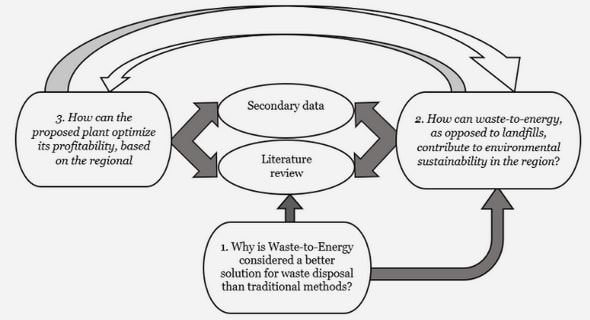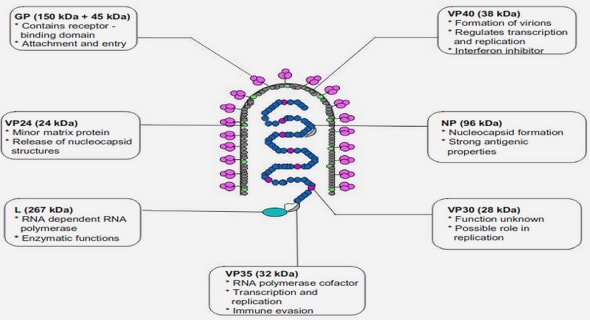Get Complete Project Material File(s) Now! »
Ultrafiltration
The conditioned medium supernatant was applied to the top well of a Vivaspin ultrafiltration column and centrifuged at 3700 rpm and 4˚C until the liquid had reduced to 1 ml, this on average took 1 h. Milli-Q-H2O at 4˚C was added to equal the original volume of conditioned medium, ~17-18 ml, and the column centrifuged again until 1 ml remained. This wash sequence was repeated 10 times followed by a final wash with 18 ml 0.05 % Triton X-100 in milli-Q-H2O. The column was centrifuged until the volume had reached ~700 µl, this spin took significantly longer than the previous washes due to the presence of the detergent. The protein levels were quantitated as described in section 2.7. Further concentration was performed using a speedvac protein concentrator.
Protein determination via reverse biuret
It is necessary to determine the protein concentration in a sample in order to load the same amount in each 2D-PAGE gel. This is essential for valid gel to gel comparisons to be made. The reverse biuret reaction is a modified version of the biuret reaction for protein determination and has increased sensitivity (Matsushita et al., 1993). In the reverse biuret reaction, colour is generated by the reduction of excess cupric ions, i.e. those not bound by protein. The colour is inversely proportional to the protein concentration. The reaction is independent of the composition of the protein, an advantage over many other protein determination methods (Matsushita et al., 1993; Sapan et al., 1999). Amersham Biosciences also produce a product, the 2D-Quant Kit, which makes use of the reverse biuret reaction. The advantage of this kit is that the solutions are readymade and quality controlled so that concentrations determined at different times are comparable.
Determination of precipitated protein
This protocol was used when samples were in buffers, such as rehydration buffer, that contained components that would interfere with the protein assay. Duplicate tubes containing 0, 5, 10, 15, 20 and 25 µl of a 2 mg/ml BSA standard solution and 5-10 µl of sample/s diluted to approximately 0.5-50 µg/µl were prepared. To each tube was added 500 µl of precipitant, the tube briefly vortexed and the sample left to incubate for 2-3 min at RT. To this 500 µl of co-precipitant was added, the tube briefly vortexed again and centrifuged at >10,000 x g for 5 min. After decanting the supernatant, the tubes were briefly re-centrifuged and any remaining supernatant removed. Copper solution (100 µl) was added to each tube and vortexed vigorously to dissolve the precipitate; to this 500 µl of working-reagent was added, mixed by inversion and incubated at RT for 15 min. 250 µl from each tube was pipetted into a 96-well plate, using milli-Q-H2O as a blank and the absorbances read at 485 nm, using a SpectraMAX 440 spectrophotometer. SoftMAX Pro software was used to generate a linear standard curve and to determine the protein concentration of the samples.
Determination of protein in solution
Sample solutions free of any substances that could interfere with the assay were analysed directly in solution. Standards of BSA at concentrations of 0, 0.25, 0.5, 0.75, 1.0, 1.5 and 2.0 mg/ml were prepared. Duplicate tubes containing 5 µl of each standard or 5 µl of the sample/s diluted to approximately 0.25-2.0 mg/ml were prepared. Copper solution (100 µl) was added to each tube and briefly vortexed, followed by 500 µl of working reagent. This was mixed by inversion and incubated at RT for 15 min. As above, 250 µl from each tube was pipetted into a 96-well plate, using milli-Q-H2O as a blank and the absorbances read at 485 nm, using a SpectraMAX 440 spectrophotometer. SoftMAX Pro software was used to generate a linear standard curve and to determine the protein concentration of the samples.
Protocol
The rehydration buffer was made in the following order. Urea and thiourea were made up to 8 ml with milli-Q-H2O and dissolved with vigorous mixing and warming in a water bath set at 37˚C. Desiccated DTT was allowed to come to RT before using, the remaining reagents were added and a small amount of BPB added to give a strong blue colour. The solution was made up to 10 ml with milli-Q-H2O and mixed thoroughly; aliquots of 0.5 ml were stored at -20˚C until use. The amount of dried protein sample required for 2D-PAGE was resolubilised in rehydration buffer (see Table 2.4).
Table of Contents :
- ABSTRACT
- ACKNOWLEDGEMENTS
- LIST OF FIGURES AND TABLES
- ABBREVIATIONS AND CHEMICAL FORMULAE
- COMPANY ABBREVIATIONS
- CHAPTER ONE – INTRODUCTION
- 1.1 INTERCELLULAR COMMUNICATION IN THE CENTRAL NERVOUS SYSTEM
- 1.2 SYNAPTIC / WIRING TRANSMISSION
- 1.3 NON-SYNAPTIC / VOLUME TRANSMISSION
- 1.4 GLUTAMATE AND GLUTAMATE RECEPTORS
- 1.5 HYPEREXCITATION AND EXCITOTOXICITY
- 1.6 EXCITOTOXICITY AND DISEASE
- 1.7 PROTEOMICS
- 1.8 AIMS
- CHAPTER TWO – MATERIALS & METHODS
- 2.1 PROJECT OVERVIEW AND RESEARCH DESIGN
- 2.2 CELL ISOLATION AND CELL CULTURE
- 2.2.1 Introduction
- 2.2.2 Poly-D-lysine coating of plates
- 2.2.3 Siliconised flame-polished Pasteur pipettes
- 2.2.4 Isolation of postnatal primary cortical neurons
- 2.3 CHARACTERISATION OF CULTURES
- 2.3.1 Introduction
- 2.3.2 Dot-blots
- 2.3.3 Immunocytochemistry
- 2.3.4 Determination of neuron to astrocyte ratio
- 2.4 CELL SURVIVAL ASSAYS AND KAINIC ACID STIMULATION
- 2.4.1 Introduction
- 2.4.2 Materials
- 2.4.3 Protocol
- 2.5 COLLECTION OF CONDITIONED MEDIUM AND CYTOSOL FOR ELECTROPHORESIS
- 2.5.1 Introduction
- 2.5.2 Materials
- 2.5.3 Protocol
- 2.6 WASHING AND CONCENTRATION OF CONDITIONED MEDIUM FOR ELECTROPHORESIS
- 2.6.1 Introduction
- 2.6.2 Materials
- 2.6.3 Protocol
- 2.7 PROTEIN DETERMINATION VIA REVERSE BIURET
- 2.7.1 Introduction
- 2.7.2 Materials
- 2.7.3 Protocol
- 2.8 TWO-DIMENSIONAL GEL ELECTROPHORESIS
- 2.8.1 Introduction
- 2.8.2 Isoelectric focusing
- 2.8.3 SDS-PAGE
- 2.9 2D GEL STAINING
- 2.9.1 Introduction
- 2.9.2 SYPRO Ruby staining
- 2.9.3 Colloidal Coomassie staining
- 2.10 PROTEIN IDENTIFICATION BY PEPTIDE MASS FINGERPRINTING
- 2.10.1 Introduction
- 2.10.2 In-gel trypsin digestion of proteins
- 2.10.3 MALDI-TOF mass spectrometry
- 2.10.4 Database identification of proteins
- CHAPTER THREE – RESULTS & DISCUSSION
- 3.1 ISOLATION AND CULTURE OF NEURONAL CELLS
-
- 3.2 CHARACTERISATION OF CULTURES
- 3.3 CELL SURVIVAL ASSAYS
- 3.3.1 Survival in B27-free conditions
- 3.3.2 Survival after kainic acid exposure
- 3.3.3 Live/dead assay, comparison to LDH as a measure of viability
- 3.4 2D-PAGE ANALYSIS OF CONDITIONED MEDIUM FROM UNSTIMULATED NEURONS
- 3.4.1 Processing of conditioned medium
- 3.4.2 2D gels of conditioned medium from unstimulated cultures
- 3.4.3 2D gels of conditioned medium from unstimulated cultures; addition of thiourea
- 3.5 MALDI-TOF MS IDENTIFICATION OF PROTEINS
- 3.6 2D GEL OF B27 SUPPLEMENT; COMPARISON TO CONDITIONED MEDIUM
- 3.7 TRYPTIC PEPTIDE COVERAGE OF THE BSA MOLECULE
- 3.8 BSA GEL SPOT PATTERNS IN THE LITERATURE
- 3.8.1 Cleavage and proteolysis
- 3.8.2 Addition of thiourea to rehydration buffer changes gel pattern
- 3.9 BOVINE SERUM ALBUMIN IS INTERNALISED BY NEURONS AND GLIA
- 3.10 ALBUMIN IN THE BRAIN
- 3.10.1 Gene expression and access
- 3.10.2 Neuronal uptake and effects
- 3.10.3 Astrocyte uptake and effects
- 3.10.4 Albumin binds metal ions and other factors
- 3.11 A PROPOSED ROLE FOR ALBUMIN AS A CU2+ CARRIER IN ALZHEIMER’S DISEASE
- 3.12 2D-PAGE ANALYSIS OF KAINIC ACID STIMULATED CORTICAL NEURONS
- 3.12.1 Processing of conditioned medium
- 3.12.2 50 µM kainic acid stimulation for 72 h
- 3.12.3 10 µM kainic acid stimulation for 24 h
- 3.12.4 Gel pattern changes after kainic acid stimulation
- 3.12.5 Kainic acid induced cellular changes
- 3.12.6 Diaschisis
- 3.13 GENERAL ISSUES
- 3.13.1 Confirmation of protein secretion
- 3.13.2 Overlap of the cytosol and secretome
- 3.13.3 Difficulties with protein identification
- 3.14 CONCLUSIONS
- 3.15 FUTURE
-
- APPENDIX
- A.1 ETHICAL APPROVALS
- A.1.1 Ethics application number 2 approval:
- A.1.2 Ethics application number 1 approval
- A.2 COMPOSITION OF NEUROBASAL-A MEDIUM
- A.3 COMPOSITION OF HIBERNATE-A MEDIUM
- A.4 COMPOSITION OF TEKLAD 2018 VEGETARIAN RODENT DIET
- A.5 SEQUENCES OF BSA MOLECULES
- BIBLIOGRAPHY
GET THE COMPLETE PROJECT
Proteomic analysis of the response of cultured neurons to chemical excitation


